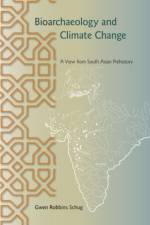av Carrie L. Sulosky Weaver
1 279,-
Choice Outstanding Academic TitleSicily was among one of the first areas settled during the Greek colonization movement, making its cemeteries a popular area of study for scholars of the classical world. Yet these studies have often considered human remains and burial customs separately. In this seminal work, Carrie Sulosky Weaver synthesizes skeletal, material, and ritual data to reconstruct the burial customs, demographic trends, state of health, and ancestry of Kamarina, a city-state in Sicily.Using evidence from 258 recovered graves from the Passo Marinaro necropolis, Sulosky Weaver suggests that Kamarineans--whose cultural practices were an amalgamation of both Greek and indigenous customs--were closely linked to their counterparts in neighboring Greek cities The orientations of the graves, positions of the bodies, and the types of items buried with the dead--including Greek pottery--demonstrate that Kamarineans were full participants in the mortuary traditions of Sicilian Greeks. Likewise, cranial traits resemble those found among other Sicilian Greeks. Interestingly, evidence of cranial surgery, magic, and necrophobic activities also appeared in Passo Marinaro graves--another example of how Greek culture influenced the city.An overabundance of young adult skeletal remains, combined with the presence of cranial trauma and a variety of pathological conditions, indicates the Kamarineans may have been exposed to one or more disruptive events, such as prolonged wars and epidemic outbreaks. Despite the tumultuous nature of the times, the resulting portrait reveals that Kamarina was a place where individuals of diverse ethnicities and ancestries were united in life and death by shared culture and funerary practices.




